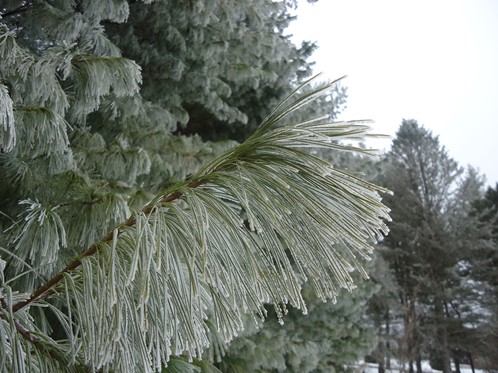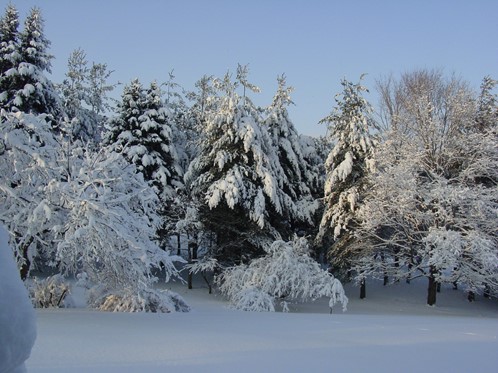Trees of Clear Lake Twp.
November 19, 2020
By Don Luepke

This tree is a native to our region and is the Eastern White Pine (Pinus strobus), and is one of the most valuable trees in eastern North America. Because it is among the more rapid growing northern forest conifers, it is an excellent tree for reforestation projects, landscaping, and Christmas trees and has the distinction of having been one of the more widely planted American trees.
The white pine can grow into a very tall, straight-stemmed tree with a crown that is pyramidal in shape. It can grow to 50 to 100 feet and in colonial times was used for masts of sailing ships. It is the largest of the northeastern conifers with maturity being reached in 150-200 years with some specimens existing for 450 years.
It is a member of the coniferous “evergreen” branch of the tree kingdom as opposed to deciduous (losing leaves in the cold season). Pines are resinous trees that are related to other types if conifers such as fir trees, cedars, and spruces. The white pine “leaves” are needles 3 to 5 inches long, bluish green on the upper surface, whitish beneath and occurring in bundles of five. It is the only conifer east of the Rockies that have needles in that five bundle. One for each of the the letters in its first name “WHITE”. The needles are soft and graceful and remain on the tree for two years.

The cone is slender, gradually tapering, 3 to 6 inches long and are fully grown in the summer of the second season, opening to distribute seed that autumn. On small branches and twigs, the bark is smooth, while the trunk has ridges and is dark gray.
The wood of the white pine is considered “soft” although there are some “harder” strains and is used in making furniture and especially in home construction, mainly forming the inner structure of studs and rafters. It is also the source of wood pulp used in the making of paper. The fully grown needles will drop in the autumn of their second year and fall to the ground in a wonderful layer of pine straw. This is a great source of mulch around landscaping plants especially those loving a more acidic environment. White pines provide nesting sites as well for many birds including woodpeckers, common grackles, mourning doves, chickadees and nuthatches.

The new growth each spring (called candles) produce those soft and graceful branches. The white pine is often pruned in late spring into a natural shaped Christmas tree. These trees (shown above) along Gecowets Drive were planted 60 years ago and trimmed back each year until they became too large (and the pruner a little too old) providing a beautiful hedgerow and windbreak.
Pinus strobus – a truly wonderful tree – evergreen, soft and graceful!

Resources:
https://www.srs.fs.usda.gov/pubs/misc/ag_654/volume_1/pinus/strobus.htm
https://www.mortonarb.org/trees-plants/tree-plant-descriptions/eastern-white-pine
video: https://youtu.be/Tjr_1BHjaY0
